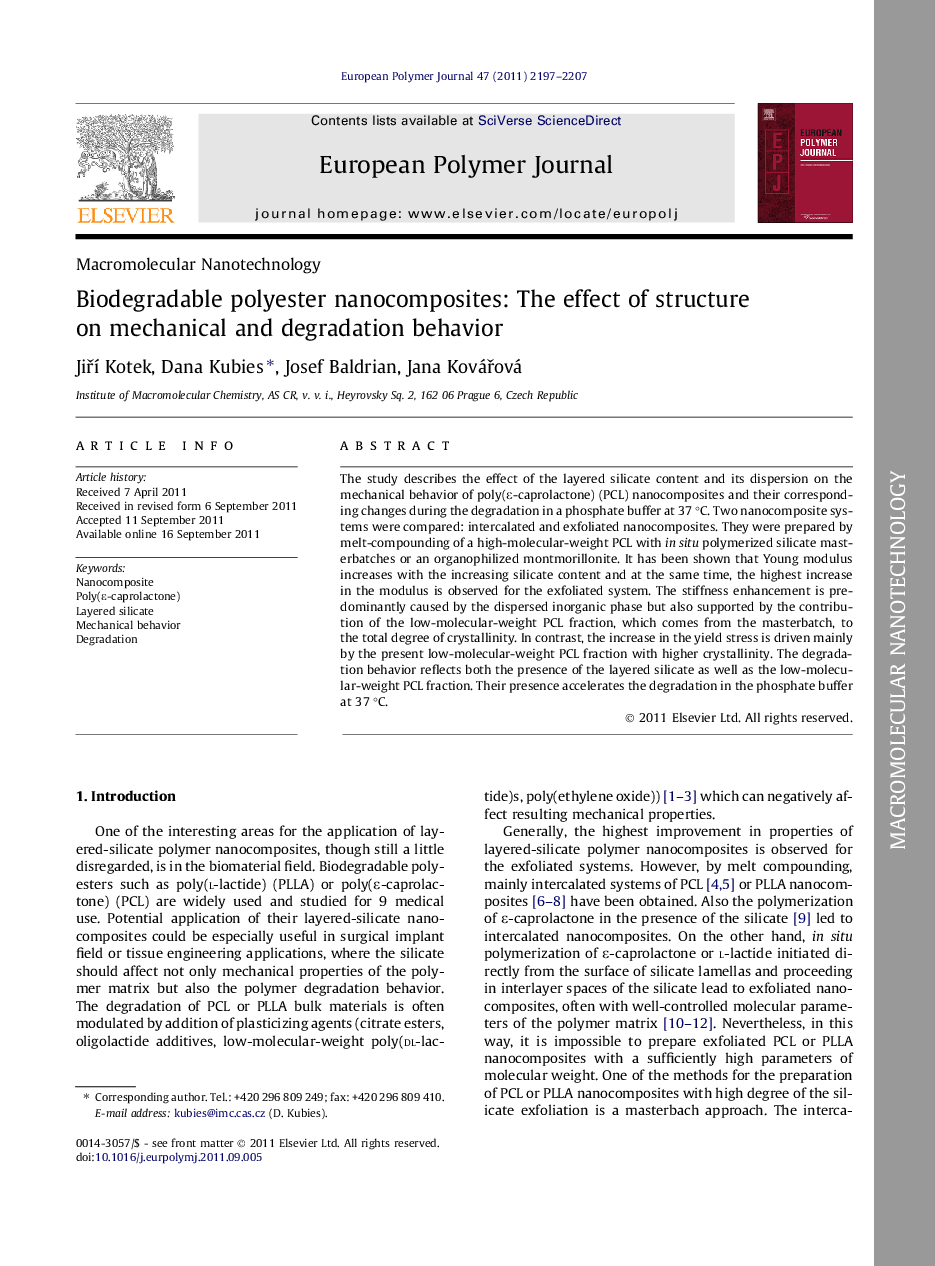| Article ID | Journal | Published Year | Pages | File Type |
|---|---|---|---|---|
| 1400628 | European Polymer Journal | 2011 | 11 Pages |
The study describes the effect of the layered silicate content and its dispersion on the mechanical behavior of poly(ε-caprolactone) (PCL) nanocomposites and their corresponding changes during the degradation in a phosphate buffer at 37 °C. Two nanocomposite systems were compared: intercalated and exfoliated nanocomposites. They were prepared by melt-compounding of a high-molecular-weight PCL with in situ polymerized silicate masterbatches or an organophilized montmorillonite. It has been shown that Young modulus increases with the increasing silicate content and at the same time, the highest increase in the modulus is observed for the exfoliated system. The stiffness enhancement is predominantly caused by the dispersed inorganic phase but also supported by the contribution of the low-molecular-weight PCL fraction, which comes from the masterbatch, to the total degree of crystallinity. In contrast, the increase in the yield stress is driven mainly by the present low-molecular-weight PCL fraction with higher crystallinity. The degradation behavior reflects both the presence of the layered silicate as well as the low-molecular-weight PCL fraction. Their presence accelerates the degradation in the phosphate buffer at 37 °C.
Graphical abstractFigure optionsDownload full-size imageDownload as PowerPoint slide
